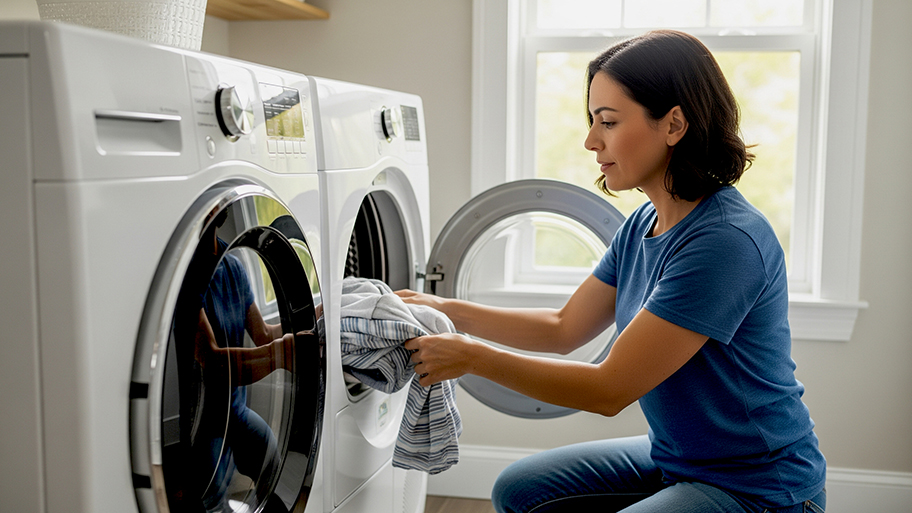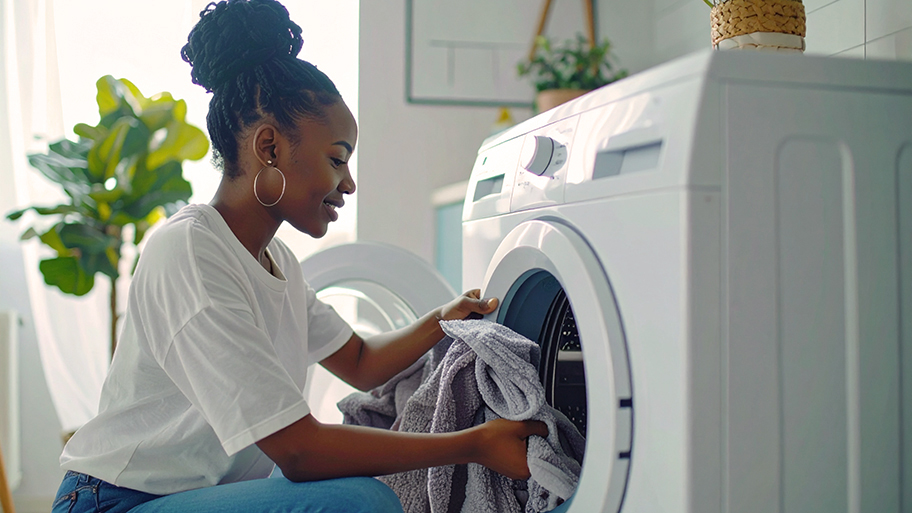
Replacing a dryer belt costs more than just the part unless you can DIY it. The labor cost can easily surpass 90% of the product cost, so if you are handy with tools, try it yourself first.
If you’re tired of squeezing veggies into a crisper drawer, it might be time to upgrade your fridge


If your fridge is running hot and loud, it’s time to replace it.
Measure your home thoroughly to choose a refrigerator size.
Choose from a variety of styles and compartment configurations.
Select from a range of extra features that add convenience.
Refrigerators tend to last at least a decade before they start sputtering and working overtime to keep your food cool. That long lifespan means it’s probably been a while since you last went fridge shopping, and the huge array of options for storage and style can be a bit overwhelming. Use this handy guide to learn how to buy a refrigerator that fits your needs.
The average lifespan of a well-maintained refrigerator today is 10 to 15 years. If your current fridge sits in that range, there are certain signs of aging that will tell you it’s time to buy a new one. Those signs include:
Constant loud noise from your motor
An unusual amount of heat from the coils
Food spoiling more quickly than it should
Fridge compartments that won’t stay cold
Condensation or frost on the interior or exterior
If your fridge is only a few years old and experiencing any of these issues, call a local fridge repair service. Fixing issues and getting the whole lifespan from your kitchen appliances is usually more cost-effective than premature replacement.
Once you’ve determined that you want a new refrigerator, the first and most important thing you’ll want to do is take measurements of your space. The measurements you’ll need include the following:
The height, width, and depth of the space where the new fridge will sit
The area in front of that space, which is where doors will open
All doorways and tight corners that lead from the outside of your home to your kitchen
Doorway measurements are key to ensure that a delivery team and installers can get the fridge where it needs to go. As you measure the space where your new fridge will sit, account for a bit of extra space on all sides for proper airflow. If you plan to choose a model with water and ice dispensers, you’ll also need extra space behind the fridge for fittings and a supply line.
Your measurements will help limit your search to models that fit, but you may not need to fill the entire space. Consider your household’s storage capacity needs.

You’ll want enough refrigerator storage space to meet the needs of your family now and in the future. Factor in how many people you have living in your household and whether that number will grow or shrink in the coming years. If you don’t have kids or other people living at home, think about how often you host dinner parties or other large gatherings.
You’ll find refrigerators sold with capacities in cubic feet, so use the following guide to help:
Aim for a minimum of 6 cubic feet of space per adult and 4 cubic feet per child
A couple who doesn’t cook at home often only needs 12–16 cubic feet
A couple who frequently cooks at home needs a minimum of 18 cubic feet
A typical family of 4 will need at least 20 cubic feet
Sheer space won’t meet all your needs, so look for the following features that help you maximize your storage space and keep your fridge organized:
Adjustable glass shelves that slide in and out for a customized configuration
Gallon-sized door bins to efficiently store a variety of beverages without using shelves
Humidity-control drawers to clearly display fruits and veggies while keeping them fresh
Pantry drawers that offer a separate temperature zone for party trays and snacks
Once you understand the fridge size and capacity you need, you’re ready to pick a style. Consider functionality and your food buying habits. Whether you buy more fresh foods or frozen foods can determine the ratio of fridge to freezer space you’ll need, as well as how easily accessible you’ll want each compartment to be.
You’ll see several fridge configurations as you shop. Here are some of the most popular:

Side-by-side refrigerators feature left and right fridge and freezer compartments (usually of equal size) that take up the full height of the unit. They have smaller doors that require less swing space, which is ideal in a narrow or galley-style kitchen. These units offer easy access to both compartments and more freezer capacity than other styles.
A classic and common configuration, these units stack the fridge and freezer components on top of one another in a variety of sizes, typically with the freezer claiming about a third of the total unit size. They tend to be a good value for your dollar and offer easy access to whichever compartment sits on top. You will need ample room to open the full-width doors, however.
There are several French door configurations. The most popular style features a spacious two-door fridge compartment on top with a bottom freezer drawer, though you’ll also find four- and five-door models with adjustable temperature and humidity for each compartment. French door refrigerators tend to be more energy-efficient since you don’t have to open the entire fridge for an item.
Counter-depth refrigerators have a shallower profile that won’t stick out past standard-depth counters and cabinets, and they’re available in both side-by-side and French door styles. You can even build a cabinet face for your fridge for a seamless, built-in look. Keep in mind that the fridge capacity with this style is smaller compared to other refrigerators.
If you already have a full-size freezer elsewhere in your home, you can maximize your capacity for fresh foods with a freezerless full-volume refrigerator.
Typically found outside of the kitchen in game rooms, home offices, and bars, a compact fridge can fit in certain cabinet or countertop settings if you have minimal need for cold storage.
These units specifically store wine or beverages, ranging in size from compact coolers to full-size refrigerators with room for hundreds of bottles.
While functionality is often the deciding factor for fridge style, you’ll also get to choose a finish. Manufacturers are adding more colors to their offerings, but you’ll almost always find traditional black, white, and stainless steel looks. Finish options also include glossy exteriors or flat surfaces that resist fingerprints and smudging.
Aside from basic food storage, today’s refrigerators offer a slew of modern conveniences. As you consider these additional features, keep in mind that they may mean a higher price tag.
Air filtration systems with built-in carbon filters to keep your fridge air smelling fresh
Connected or smart fridges that track food freshness, update your shopping list, alert you to self-diagnosed problems, and integrate with your phone or other device
Door-in-door panels that save energy by offering small storage for frequently-accessed items without the need to open the entire door
Dual-cooling systems that allow freezers to circulate air separately from the fridge to keep each compartment at ideal temperature and humidity levels
Dual ice makers with separate bins for the door dispenser and pull-out freezer drawer
In-door ice storage for more convenient ice access that frees up freezer space
Programmable control pads to set temperatures, lock dispensers, check filter conditions, or preset a specific amount of water to dispense
From average costs to expert advice, get all the answers you need to get your job done.

Replacing a dryer belt costs more than just the part unless you can DIY it. The labor cost can easily surpass 90% of the product cost, so if you are handy with tools, try it yourself first.

Looking to keep warm this winter without the high utility bills? Use this pellet stove installation cost guide to see what a natural heating solution will cost.

Discover the average washing machine repair cost, key price factors, and expert tips to help you budget and save on repairs for your home.

Ready to upgrade your kitchen with a new stove? Review the pros and cons of these common types of stoves to find the right one for your cooking needs.

Your gas stove may not light for a number of reasons, including problems with the safety valve or igniter. Learn how to troubleshoot why your gas stove is not lighting.

A frozen washing machine drain can interrupt your laundry routine. Learn what to do when your washing machine drain is frozen and how to prevent it.